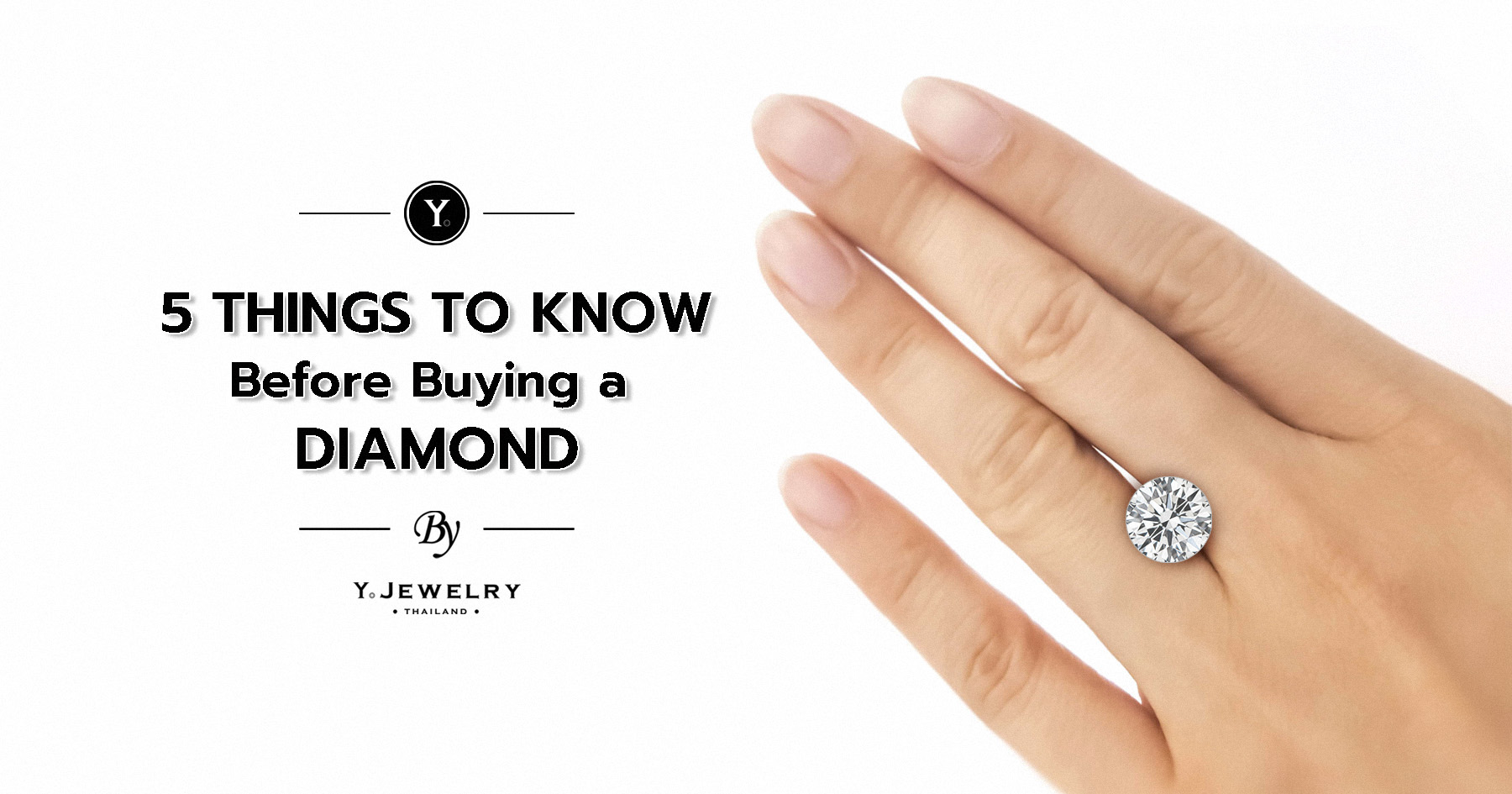
5 Things To Know Before Buying a Diamond
If we are buying a diamond, we want to make sure that the diamond we choose is of the best quality and always priceless for us to pass on as gifts to our loved ones. Let’s take a look at a step-by-step guide for choosing the best diamond: what to look for, and how to buy your diamond like a professional.
The most common criteria for both buyers and sellers in the diamond market is the “4Cs” which is known internationally for evaluating a diamond’s quality and its price. However, there are more details to keep in mind along with the 4Cs to consider to make every penny worth for the best diamond purchase.

I. Excellent Cutting Grade
Have you ever heard of “3EX Diamond”?
The most important factor in evaluating the physical qualities of a diamond is called cut/cutting which consists of:
1.Cut: Cutting’s structure and angles
2.Polish(Brillianteering): Check for minor scratches and polish to perfection
3.Symmetry: Alignment of a diamond’s facets
There are 5 grades in evaluating each: Excellent, Very Good, Good, Fair, and Poor.
A diamond that has Excellent cut, polish, and symmetry is called “3EX”. Out of these characteristics, the cut is considered the most crucial procedure as it affects the diamond’s fire. Purchasing a 3EX diamond is not a problem with a flexible budget–but if you are trying to control your diamond cost, then we would recommend prioritizing a diamond with Excellent cut first, with polish and symmetry grade second for the most gorgeous diamond. Especially when the perfect-cut diamond is clearer and shines even more dazzling because it reflects light even better.

II. Medium Girdle Thickness
Girdle is the thin edge of a diamond. Looking at the girdle can help determine if the ratio of the diamond’s diameter and weight is balanced.
If the diamond’s certificate says the girdle thickness is “Thick to Very Thick”, the weight of the diamond falls at the bottom of the piece which would make the diameter smaller than usual. So the girdle thickness we are looking for is around “Thin to Medium”. The diameter and weight of thin to medium girdle thickness diamonds are well-balanced, making them diamonds worth purchasing. Even more so, thin to medium girdle diamonds sometimes have wider diameters than usual–the best bargain diamond buyers can’t miss.

III. Quality of Inclusion
Inclusion in genuine, natural diamonds is common. It is like a ‘birthmark’ –unique to each individual diamond. Good inclusions should be clear without any colors as they can greatly affect a diamond’s reflection route. If the inclusion is at the angle where the light falls on, especially an inclusion with a color like black or brown, the whole diamond may seem like it bears dark spots all over. It will not shine much, lose its luster, and lose its value. Other than inclusion colors, inclusion size, spot, and numbers affect the diamond’s pricing and value as well.
Diamonds with several obvious, big, colored inclusions will have lower prices compared to diamonds with the same grades.

IV. Non-Fluorescence Diamond Only
Fluorescence is a light-radiating substance which can be seen in diamonds under black light. Diamond develops fluorescence in the previous process underground, some diamonds contain little amount of fluorescence while others contain more. Diamonds with slight fluorescence barely glow even under black light, but diamonds with strong fluorescence tend to be ‘milky’ under natural light and glow deep blue under black light which may make the diamonds seem clouded. These diamonds are not as popular as other diamonds on the same tier, and have lower prices.
Non-Fluorescence diamonds are recommended. However, if you are buying a L-Grade diamond that has a strong yellow tint, fluorescence’s blue tint can balance out the yellow hue in the diamond and make the diamond seem whiter. But if your preference is still a diamond with a slight yellow tint, then non-fluorescence diamond is definitely a better choice.
V. Premium Size Diamond
If you are looking for a full-face diamond but you have a limited budget, a Premium Size diamond, also known as an Oversize diamond, might be just what you need. Let’s say you want a 1-carat diamond, the alternatives are diamonds that weigh around 0.90 – 0.99 carats. You will have your diamond that has a big face similar to a 1-carat diamond, with very few differences in size, and far greater prices.
We will come back with more tips and tricks to help you purchase the best diamond.
Trust Y Jewelry Thailand for the best quality diamond, as we trust you with our best prices.
 |
Written by
Sornsida Y. Chanonprapa (G.D. GIA 2015)
|
|
Diamond Nerd จากสถาบัน GIA ศึกษาเรียนรู้ หัด grading เพชรมาโดยเฉพาะ บวกกับพื้นฐานเป็นลูกช่างทอง มีประสบการณ์ทำงานใน Field จิวเวลรี่มากว่า 20ปี จึงอยากใช้พื้นที่นี้แบ่งปันความรู้และประสบการณ์กับทุกคนค่ะ
|
